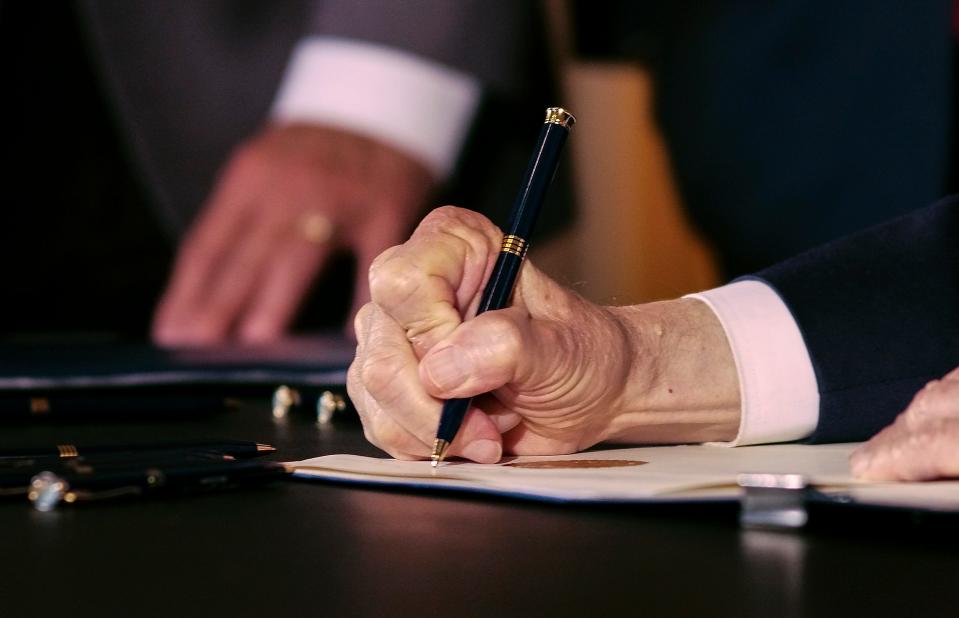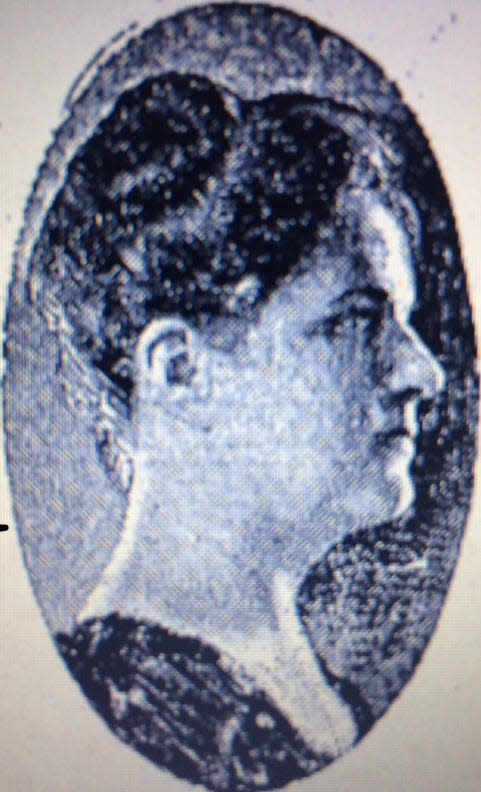Thomas Suddes: What will happen after election night confetti drops, victory speeches?
Thomas Suddes is a former legislative reporter with The Plain Dealer in Cleveland and writes from Ohio University. tsuddes@gmail.com

The tradition hereabouts is, just before Election Day, to avoid writing about candidates and ballot issues until the votes are counted Tuesday night and Wednesday morning.
Still, whichever party captures the governorship must, by mid-winter, propose a state operating budget for the two years ending June 30, 2025.
Likewise, whichever party captures a majority of the Ohio House of Representatives’ 99 seats must select a speaker to preside over that chamber, and its budget debates, through 2024.
That is, what’s really climaxing this week are decisions by Ohio voters over who should run a state of 11.8 million people for the next two years – and how to run it.
Lectern-pounding aside, we’re talking about managing a $76 billion state general revenue budget in an economy that ranks 21st worldwide, the Legislative Service Commission reported in 2020. (Ohio’s economy ranked just below Switzerland’s, ranked 20th.)
Whoever Tuesday’s victors are, at least at the Statehouse, Ohioans are, in effect, hiring or retaining budget managers.
Balloons, confetti and Election Night speeches are part of the pageantry of politics. But come Wednesday morning, it’s back to checkbook registers, and bookkeeping ledgers, and state budget office spreadsheets.

More:How to submit guest opinion columns to the Columbus Dispatch
Cross-party agreement in the Statehouse
For all the sweat and gore of Campaign ’22, what often gets lost in it is that people in Ohio politics do periodically reach across the General Assembly’s aisle to promote the public good.
Excellent examples are Ohio’s best-in-the-nation public libraries, a feature of community life statewide often take for granted. True, Ohio long has had a kind of civic conscience about good libraries, reaching back to when the first Bob Taft was in the legislature, in the ‘20s and ‘30s. But what really assured Ohio libraries they could offer communities great cultural and reference resources was a bipartisan effort – in the mid-1980s – that guaranteed public libraries a percentage of statewide revenues in Ohio’s two-year budgets.
The same is true of some other public policy accomplishments at the Statehouse, starting with a de facto Statehouse consensus that favors (all things considered) common-sense state budgeting. Yes, there are the usual ifs, ands, and buts – but without cross-party agreement, there’d be conflict rather than at least periodic agreement when Ohio legislators craft a state spending plan every odd-numbered year.
The current state budget, enacted in mid-2021, won approval by an all-but-unanimous margin in the state Senate and with only 12 “no” votes in the 99-seat Ohio House of Representatives. The contrast with federal budgeting is stark, thanks to people of both parties in Columbus who take a long-term view of Ohio’s finances.
Milestones in women's political history
Although the anniversary seems to be passing without much notice, it was 100 years ago this week, on Election Day 1922, that Ohioans elected the first six women to be General Assembly members – and the first woman in the United States to serve on any state’s highest court.
Elected on Nov. 7, 1922, to the Ohio Supreme Court was Florence E. Allen, of Cuyahoga County (1884-1966). She was the first woman in the United States to serve at the pinnacle of any state’s judicial system. Allen served on the Ohio Supreme Court until 1934. That’s when President Franklin D. Roosevelt appointed Allen to the Cincinnati-based U.S. Court of Appeals (6th Circuit), the first woman to serve on any federal Circuit court.

Also elected 100 years ago this week were the first women to serve as members of the Ohio General Assembly – two state senators, four state representatives. All six were Republicans.
Elected to the Senate in November 1922 were Sen. Maude Comstock Waitt, of Lakewood (1878-1935) and Sen. Nettie Bromley Loughead, of Cincinnati (1870-1936).
Elected to the Ohio House of Representatives in 1922 were Rep. Nettie McKenzie Clapp, of Cleveland Heights (1868-1935); Rep. Lulu Thomas Gleason, of Toledo (1864-1953); Rep. Adelaide Sterling Ott, of Youngstown (1871-1929); and Rep. Mae Martin Van Wye, of Cincinnati (1878-1968).
Today, according to Rutgers’ Center for American Women in Politics, 30.3% of the General Assembly’s members are women – in a state whose population is 50.7% female.
Thomas Suddes is a former legislative reporter with The Plain Dealer in Cleveland and writes from Ohio University. tsuddes@gmail.com
This article originally appeared on The Columbus Dispatch: Thomas Suddes: The focus of politic in Ohio after the election

